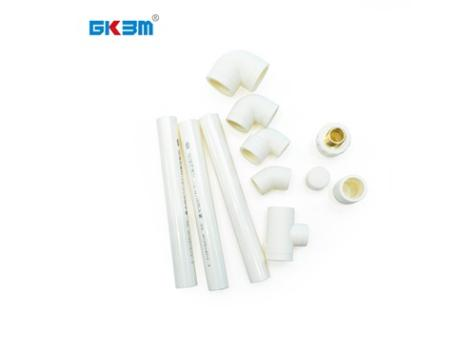Central Asia, encompassing Kazakhstan, Uzbekistan, Turkmenistan, Kyrgyzstan, and Tajikistan, serves as a vital energy corridor in the heart of the Eurasian continent. The region not only boasts abundant oil and natural gas reserves but is also making rapid strides in agriculture, water resource management, and urban development. This article will systematically examine the current state and future trends of pipeline systems in Central Asia from three dimensions: pipeline types, primary materials, and specific applications.
Pipeline Types
1. Natural Gas Pipelines: Natural gas pipelines centered around Turkmenistan, Uzbekistan, and Kazakhstan are the most widespread and strategically significant type, characterized by long distances, high pressure, cross-border transportation, and traversing complex terrain.
2. Oil Pipelines: Kazakhstan serves as the central hub for oil exports in Central Asia, with oil pipelines primarily used to export crude oil to Russia, China, and the Black Sea coast.
3. Water Supply and Irrigation Pipelines: Water resources in Central Asia are extremely unevenly distributed. Irrigation systems are crucial for agriculture in countries like Uzbekistan and Tajikistan, with water supply pipelines serving urban water supply, farmland irrigation, and interregional water resource allocation.
4. Industrial and Urban Pipelines: With the acceleration of industrialization and urbanization, natural gas heating, industrial liquid transportation, and wastewater treatment pipelines are increasingly being adopted in sectors such as power generation, chemicals, heating systems, and municipal infrastructure.
Pipeline Materials
Depending on their intended use, the medium being transported, pressure ratings, and geological conditions, the following pipeline materials are commonly used in Central Asia:
1. Carbon steel pipes (seamless pipes, spiral welded pipes): These pipes are suitable for oil and gas long-distance transmission pipelines, featuring high strength, excellent pressure resistance, and suitability for high-temperature and high-pressure environments. Their materials must comply with relevant standards such as API 5L and GB/T 9711.
2. PE and PVC pipes: Suitable for agricultural irrigation, urban water supply, and domestic wastewater discharge, these pipes are lightweight, easy to install, and have excellent corrosion resistance. Their advantage lies in their ability to effectively accommodate low-pressure transportation systems and rural infrastructure development needs.
3. Composite pipes (such as fiberglass pipes): Suitable for conveying highly corrosive liquids and special industrial applications, these pipes offer corrosion resistance, excellent insulation properties, and a long service life. However, their limitations include relatively high costs and a narrower range of applications.
4. Stainless steel pipes: Suitable for use in chemical, pharmaceutical, and food industries with high hygiene requirements, these pipes feature extremely strong corrosion resistance and are suitable for conveying corrosive liquids or gases. Their primary applications are within factories or for short-distance conveyance.
Pipeline Applications
Pipelines in Central Asia have widespread applications across energy, agriculture, industry, and public welfare sectors. Natural gas pipelines are used for cross-border gas transmission (export) and urban gas supply, primarily in Turkmenistan, Uzbekistan, and Kazakhstan; Oil pipelines are used for crude oil exports and refinery supply, with Kazakhstan as a representative example; Water supply/irrigation pipelines serve agricultural irrigation and urban-rural drinking water supply, applied in Uzbekistan, Tajikistan, and Kyrgyzstan; Industrial pipelines are responsible for industrial liquid/gas transportation and heating systems, covering all Central Asian countries; Sewage discharge pipelines are used for urban sewage and industrial wastewater treatment systems, distributed in major cities undergoing urbanization.Sewage Disposal Pipelines Urban sewage and industrial wastewater treatment systems Major cities undergoing urbanization
The pipeline types in Central Asia are diverse and varied, with material selection tailored to specific applications. Together, they form a vast and complex infrastructure network. Whether for energy transportation, agricultural irrigation, urban water supply, or industrial production, pipelines play an irreplaceable role in the economic development, social stability, and improvement of living standards in Central Asia. With ongoing technological advancements and deepening regional cooperation, the pipeline systems in Central Asia will continue to evolve and expand, contributing even more significantly to regional and global energy supply and economic prosperity.
Post time: Aug-12-2025






